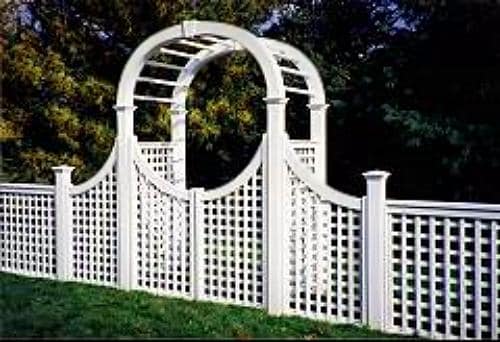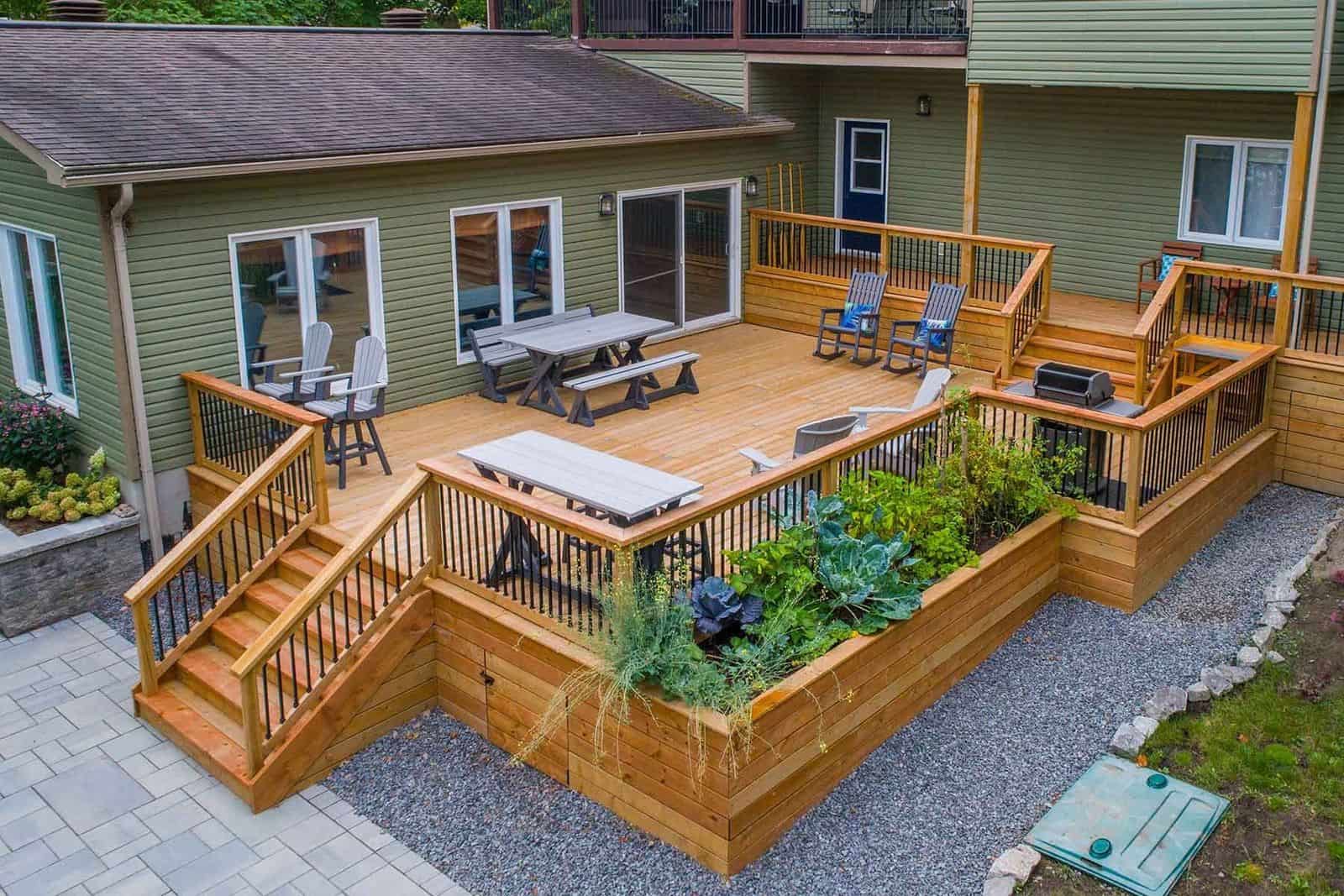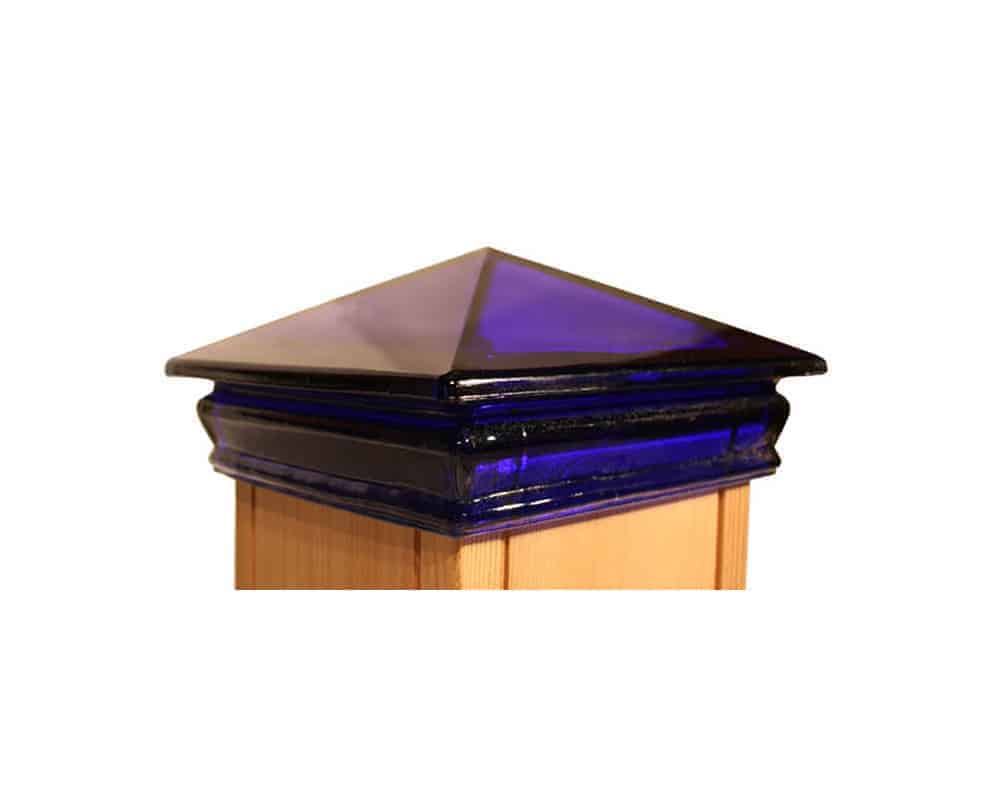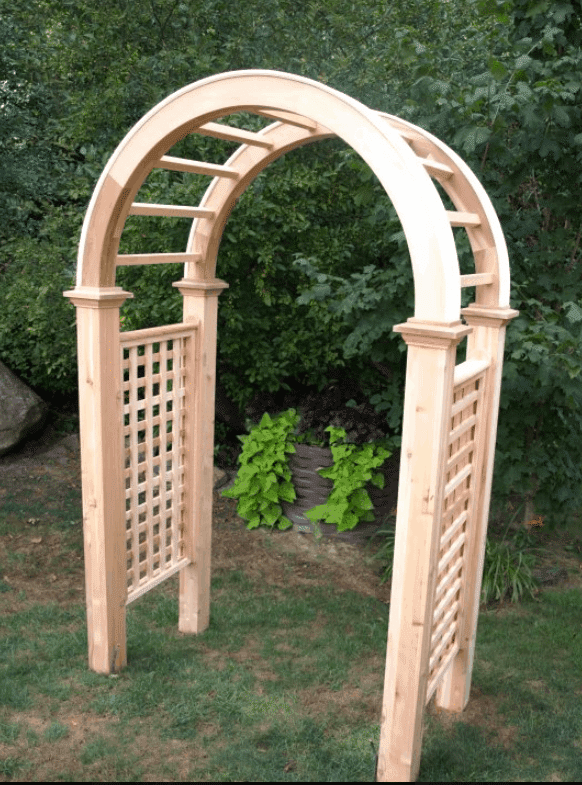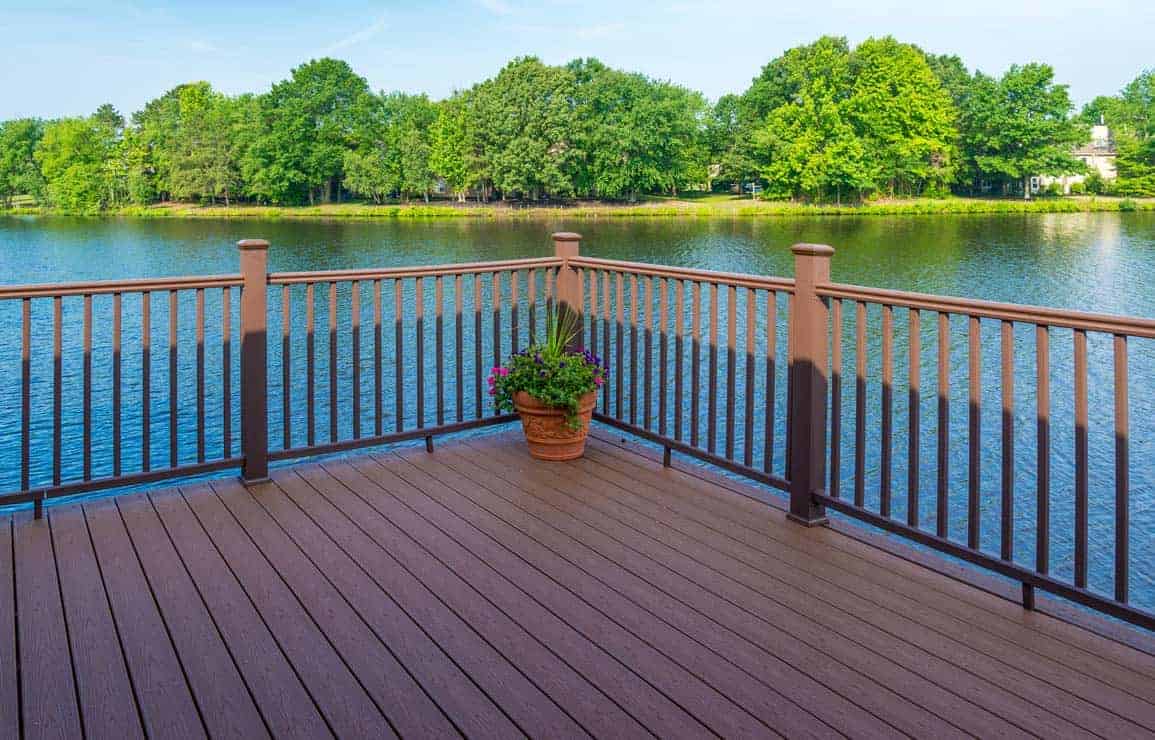1. What is the difference between an arbor, a trellis and a pergola?
Although the terms often are used interchangeably, trellises, arbors, and pergolas are distinctly different structures.
A trellis is typically a latticework built to support climbing plants or vines. It can be a simple panel attached to the side of a building, or it can be freestanding in a garden or yard.
An arbor usually incorporates a trellis into its structure, creating a tunnel-like passageway for climbing plants. Arbors have latticework on the sides and spindles on the top. The top is often an arched shape.
Pergolas, too, are designed to support climbing plants. Unlike arbors,
though, pergolas simply have posts supporting a roof-like structure. They’re most commonly used to shade a walkway or a deck.
2. What materials are available for arbors?
Almost every single arbor we sell or install is a Western Red Cedar Arbor. Red Cedar is the ideal choice for an arbor due to its naturally rot resistant characteristics (please view our Cedar FAQs page for more information on Cedar) as well as its extremely tight and knot free grain that allows for curved components that will not warp or crack.
The other material choice for an Arbor is Vinyl (or PVC). These are less common as they are just as expensive as their cedar counterparts, but are not as durable. However, if you are looking for an arbor that you want to be a color without paint or stain, then a Vinyl arbor would be a good choice for you.
3. How long will a cedar arbor last?
Cedar’s natural resistance will give it a life expectancy of 15-20 years.
4. Do the arbors need to be assembled?
Yes, due to their size, arbors are shipped “broken down.” However, they are extremely easy to assemble and install and the kits includes everything you need.
5. How deep do the posts need to be set?
Ideally, you should embed the posts 2-3′ below grade. However, the final depth of the post will be determined by how high you would like the arch (or top) of the arbor to be above ground. Typically we set the highest point of the arch around 6′-6″ to 7′ high.
6. What do the size options mean for the arbors?
The size of an arbor is determined by the distance from inside to inside of the posts. For example, a 4′ arbor will have a 4′ wide clear opening, though the footprint of the arbor will be 4′-7″ due to the size of the 4×4 posts.
7. What are the options for the side panels of the arbor?
The sides of the arbors are made from lattice panels. You have the choice between a diagonal pattern or a square pattern.
8. Do arbors need to be painted or stained?
They can, but ordinarily a cedar fence is left unfinished to weather bleach naturally to a beautiful silver gray. Adding a paint or stain will not prolong the life of the arbor, only maintain a color or appearance.

